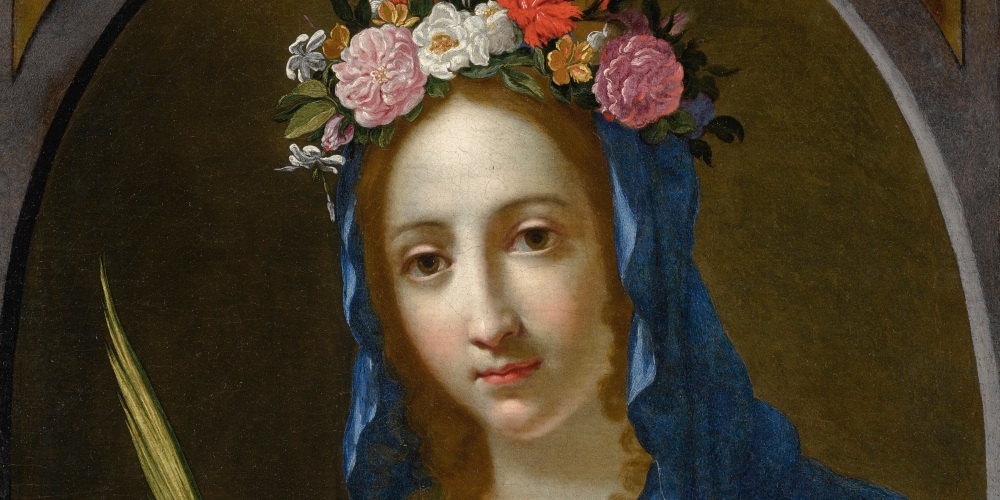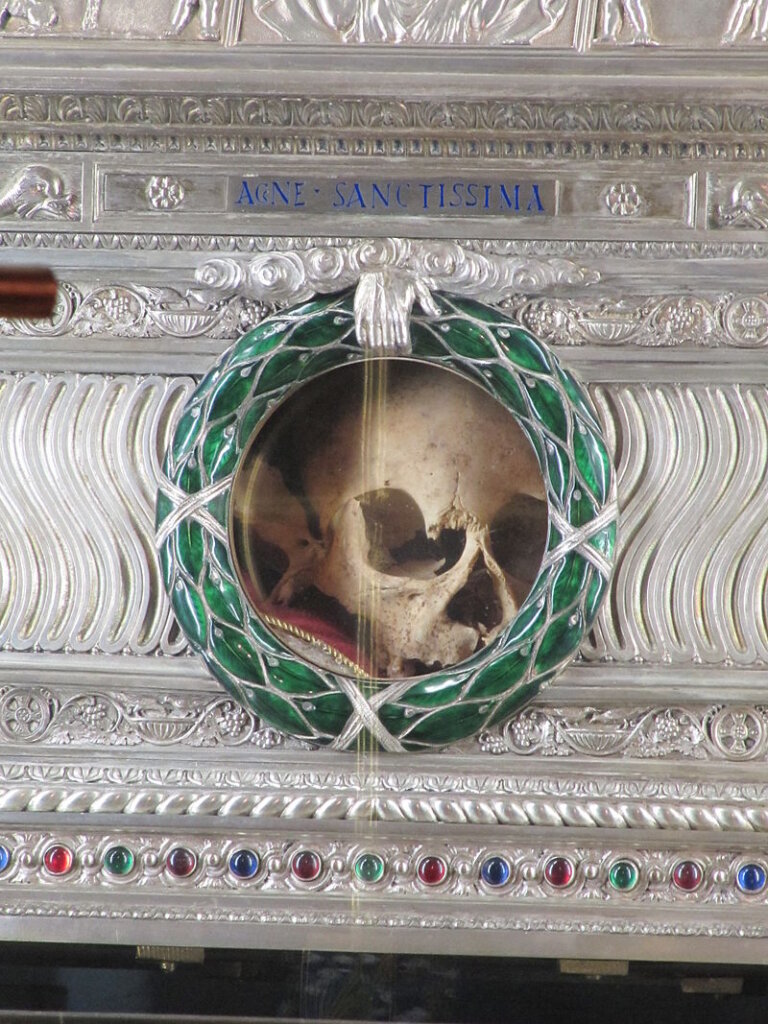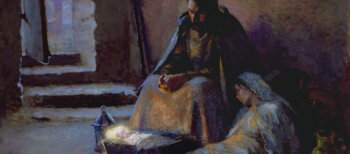
There are varying accounts of how St. Agnes of Rome was martyred.
Which one is the most accurate? It’s uncertain.
There is something consistent, however, in each potential history: they all tell the story of heroic virtue lived out by a young girl who was only twelve or thirteen at the time of her death.
What is her legacy, and what are the impressive stories told about her?
Let’s find out.
Who Was St. Agnes?

Agnes is one of the earliest and most beloved martyrs.
Her praises were sung by St. Ambrose (c. 339 – 397), Pope St. Damasus I (c. 305 – 384), and a Roman Christian poet named Prudentius (c. 348 – 413).
Her name is enshrined in the Holy Mass itself.
Of all the virgin martyrs of Rome none was held in such high honour by the primitive church, since the fourth century, as St. Agnes.
In the ancient Roman calendar of the feasts of the martyrs…dating from 354 and often reprinted…her feast is assigned to 21 January, to which is added a detail as to the name of the road (Via Nomentana) near which her grave was located.
The earliest sacramentaries give the same date for her feast, and it is on this day that the Latin Church even now keeps her memory sacred.
Since the close of the fourth century the Fathers of the Church and Christian poets have sung her praises and extolled her virginity and heroism under torture.
Kirsch, J.P. (1907), The Catholic Encyclopedia
Born into a wealthy Christian family in Rome in about 291 A.D., the young Agnes was beautiful and highly sought after as a bride.
But she had made her choice. Agnes held a deep and pious desire to offer her virginity and purity to the Lord.
So all suitors were given the same answer: “Jesus Christ is my only Spouse.”
The Suffering of St. Agnes

Angered by this rejection, one suitor turned St. Agnes in to authorities under the accusation of being Christian, which was illegal in Rome at that time.
There are many speculations as to who this suitor was, as well as the final details of her death.
One version of the story suggests that it was the son of the Governor who sent her to his father for punishment. Despite being offered great gifts in exchange for denying God, Agnes refused, saying, “I am already promised to the Lord of the Universe. He is more splendid than the sun and the stars, and He has said He will never leave me!” In an act of punishment and vengeance, St. Agnes was sent to a brothel.
The story goes that God—refusing to allow her to be defiled—sent an angel to guard St. Agnes in this place of sin, blinding the sight of all who attempted to come near her.
Some say that the governor’s son attempted to defile her himself, but was struck dead instead. Restored to life by the prayers of St. Agnes, he awoke, proclaiming the sovereignty of God and converting many witnesses.
Another famous version of the story says that St. Agnes—either on the way to the brothel or in a separate instance of punishment—was sentenced to be dragged naked through the streets. Again, in an astonishing miracle, Agnes’ purity was protected: her hair grew at an impossible rate, covering her entire body and shielding her from lustful eyes.

Regarding Agnes’s death, it is said that she was ultimately condemned to be burned.
When the flames refused to touch her, she was stabbed in the throat (or decapitated—it is uncertain which).
The Legacy of St. Agnes

These accounts of St. Agnes are intense. It is difficult to imagine any individual overcoming with peace and fearlessness.
It is an even more powerful witness, however, to imagine such a trial being faced by a girl as young as twelve. God’s love and virtue brought forth an incredible courage, fortitude, and love in St. Agnes.
In sacred art, Agnes is commonly depicted with lambs. The latin word for lamb is agnus, which sounds similar to the name Agnes. (The name “Agnes” also means holy or pure.)
In keeping with this symbol of a lamb, a special tradition takes place in Rome on her feast day of January 21st: two lambs are brought to the pope and blessed. On Holy Thursday, the lambs’ wool will be sheared and woven into a pallium, which is a liturgical vestment worn by the archbishops as a symbol of their participation in papal authority.
The Relics of St. Agnes

Today, the remains of St. Agnes are in Rome.
Her bones are kept beneath the high altar in the church of Sant’Agnese fuori le mura, which was constructed over the catacombs.
Her skull is preserved elsewhere, in the chapel of the church of Sant’Agnese in Agone.
Pilgrims from all over the world come to venerate St. Agnes in these places of honor, particularly those who find solace in her patronage.
Having such a powerful story of beauty, purity, and valor, St. Agnes remains a powerful witness for the Church and her members. She is known as the patron saint of young girls, rape survivors, and the virtue of chastity.
To this day, feast is celebrated on January 21st.
St. Agnes, pray for us!






